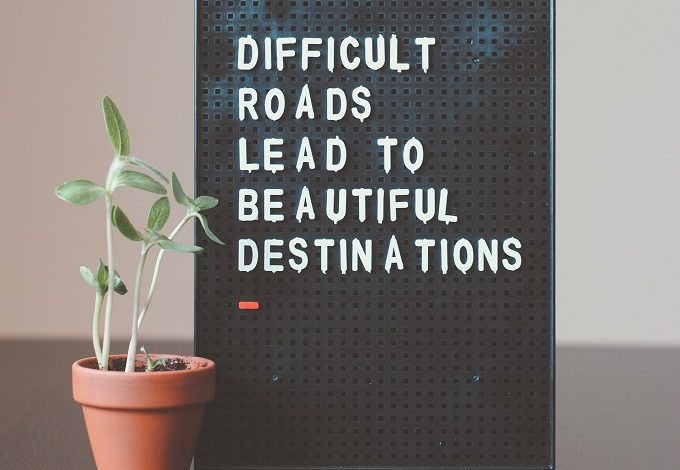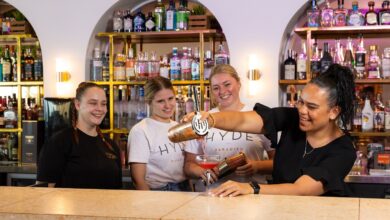
Surprising mental health response to COVID crisis from workers
It is Mental Health Week and the impact of COVID-19 on Australian workers' mental health has been profound, according to Australia’s largest workplace mental health study.
The results are both shocking and surprising with more employees experiencing mental health conditions, especially at risk are casual workers and those whose employers do not provide a supportive environment for mental health. However, there is also a twist with some employees thriving through the pandemic and reporting being healthier and happier, and the difference seems to be down to the employer and the leadership of the business.
The findings highlight that three-in-five workers experienced a mental health condition this year, which is up almost nine percentage points from 2019, with many struggling for the first time during the pandemic. However, new research released this week by national mental health organisation, SuperFriend also showed beneficial financial and mental health outcomes for workers at organisations that invest in mental health initiatives. Sadly, more than half of Australia’s workers (55.1 percent) report zero action taking place at their workplace, however.
The survey of 10,338 Australian workers for the annual Indicators of a Thriving Workplace study revealed that the 2020 national workplace mental health and wellbeing index score increased to 65.1 out of 100, after remaining steady for the previous two years at 62.7. Commenting on these findings, SuperFriend CEO, Margo Lydon said: “The improvement in the overall score is surprising, but welcome news in these extraordinary times.
Australia’s workplaces have moved closer to thriving over the last year. While this improvement may seem counter-intuitive during such turbulent times, it infers two things: work is generally good for our social connections and mental health, and long-term sustained efforts to improve workplace mental health are starting to gain traction.”
This shows there have been some unexpected COVID benefits for some employees such as connectedness, productivity, and access to leaders. Indeed, the research found that Australian workers are feeling more connected than ever before, particularly in organisations where everyone worked remotely for at least a month since March 2020, compared to those who worked on-site (71.3 vs 67.6 out of 100).
There has also been a surprising increase in the number of people who have become more productive throughout this period (up 4 percentage points from February to 29.4 percent in June). The most popular productivity boosters were identified as “Reduced commute to work” (38.4 percent), “More comfortable clothing” (31.3 percent), and “Flexible work hours” (29.4 percent).
“Who’d have thought a pandemic which introduced ‘social distancing’ as a behaviour norm would make us feel more connected at work?” Ms Lydon said.
“A key positive coming from this crisis is the surge in the sense of shared purpose. Workplaces are increasingly feeling like communities where people support each other beyond getting the job done.
“Time usually spent getting ready for work, commuting and attending unnecessary meetings is instead spent with loved ones, exercising, pursuing personal interests or getting more sleep – all known factors to improve wellbeing and increase productivity,” she added.
COVID-19 has “turbocharged leadership changes at Australian workplaces” according to Ms Lydon, particularly at organisations that are taking tangible action to improve workplace mental health and wellbeing. “We know that leaders’ work and travel habits have shifted substantially in the wake of COVID-19, creating space and time for more accessibility, which also had a big impact.”
Three in five employees (58.9 percent) working in action-oriented businesses confirmed that leadership has improved since March with leaders being more accessible when needed and acting as champions for their teams (versus 1.7 percent in less committed workplaces).
“For leaders, this is a fantastic opportunity to get to know their staff better, practice self-reflection, build resilience and trust to effectively reduce worker frustration and stress and create happier, healthier workplaces,” Ms Lydon added.
Concerning hot spots: Casual and insecure work and stigma
The Thriving Workplace research found that casual workers are the furthest from thriving, and the gap has widened due to COVID-19. As an example, the Culture index score was 66.0 for full-time workers, compared with only 62.0 for casuals. Casual workers also reported persistent declines in respect and inclusiveness over three consecutive years.
“This is hugely concerning,” said Ms Lydon. “Over the last few years of conducting this research, we have noticed a persistent decline in outcomes for casual workers and industries with higher casualised workforces. Casual workers have very little job security, and fewer opportunities to access workplace mental health programs and resources compared with their securely employed peers. Accommodation, food services, and arts and recreation workers have been particularly hard hit because of this.”
Further, while organisational supportiveness of employee mental health and wellbeing has improved since last year (up 8.8pp to 51.9 percent), the stigma around other issues has emerged, such as physical health and racism.
6.6 percent of workers reported that they have experienced stigma around physical health issues (cold and flu symptoms) this year, and 5.1 percent experienced racism in the workplace. These workers also have overall thriving workplace scores that are well below the national average of 65.1 out of 100 (54.7 and 56.6, respectively).
“It’s encouraging to see there’s more support for workplace mental health, which may be partly due to an increased public dialogue about mental health and wellbeing since the beginning of the pandemic, and the elevated role work has played in people’s lives while other activities have been restricted.
“Some things have been really eye-opening, though, such as people having access to very basic things for the first time since COVID, like team meetings,” she added.
Taking action is not a choice, but a necessity
According to the report, workplace commitment to improving workers’ mental health and wellbeing through tangible action has been particularly important this year, and more people reported their workplace took action compared with 2019.
The best industry for taking action was information media and telecommunications, and the worst-ranked was transport, postal, and warehousing. Also, while ‘lack of time and commitment’ has tumbled as the most commonly perceived barrier preventing employers from investing in workplace mental health and wellbeing, ‘businesses facing more important issues / struggling to survive’ has emerged as the new biggest hurdle, especially for small businesses.
One in three workplaces (29.8 percent) have implemented new initiatives to support workers’ mental health and wellbeing since March, such as paid mental health days off, sick pay for casual workers, meeting-free blocks, and substantially longer break times.
However, more than half (55.1 percent) of workplaces are still not taking any tangible action, despite a stronger national focus and additional funding. These workplaces are missing out on huge benefits to their workforce and their business more broadly.
“Lost productivity due to mental ill-health is estimated to cost the Australian economy between $10-18[2] billion every year, but on the flip side, every dollar invested into workplace mental health is estimated to deliver a return on investment of 5:1.
“In light of this, taking action by investing in workplace mental health and wellbeing is not an optional extra, it’s a must-have. With Australia’s increasing awareness of workplace mental health and its links to productivity, combined with our radically transformed ways of working, I hope this marks a positive tide of change,” concluded Ms Lydon.

AccomNews is not affiliated with any government agency, body or political party. We are an independently owned, family-operated magazine.







